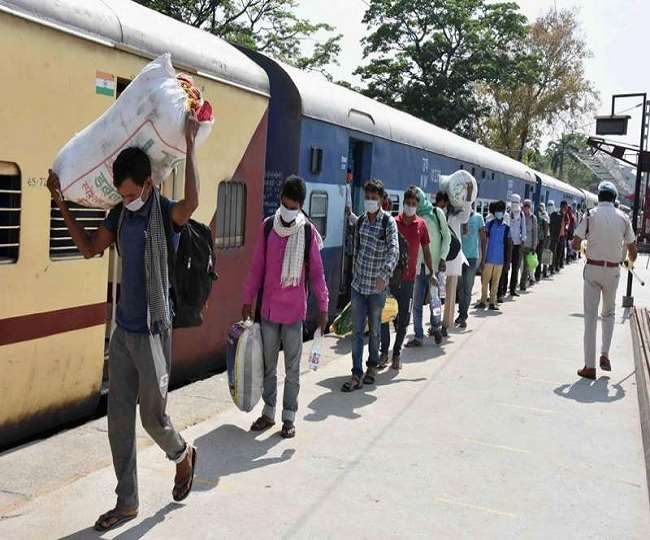CORONA DIARIES 17: Damned If They Do, Damned If They Don’t – Govts Have No Easy Option Out
What can a person forced to stay at home possibly do? With going to office suddenly turning passé and stepping out becoming hazardous to health, those trying to break the coronavirus chain through social distancing could well revive the old tradition of writing on their diaries. In our special series, Corona Diaries, New Delhi-based senior journalist Akshaya Mishra captures the subtleties of life and the times we are in.

It’s fait accompli. One cannot just wish the coronavirus out of existence; one has to find pragmatic ways to live amid its ominous presence. The growing consensus among decision-makers around the world at this point is lockdown is not normal. It is not sustainable either. So life should be allowed its normal flow. The strategy from now on should be to minimise the damage from the disease. This position was articulated well by Delhi Chief Minister Arvind Kejriwal a couple of days ago.
“Corona is here to stay. We have to learn to live with it,” was his typically frank, no-nonsense assessment of the COVID-19 situation a couple of days ago. Forget imagining a situation, he said, not in these exact words though, where there won’t be any coronavirus patient, till at least a vaccine or a cure is found; we have to resume activities. He added the disease had to be taken as any other illness. As in the case of other illnesses, people will get sick, admitted to hospitals, recover and get back to their lives. The focus should be to minimise deaths.
The reasoning behind this line of thinking comes down to cost-benefit analysis. The cost of lockdown is far higher than the benefits from it. Ceasation of all activities, economic activities specifically, is a recipe for disaster. It might lead to uncontrollable social unrest and political upheaval. Signs of brewing public anger and frustration are visible in several countries already. The immediate worry for governments there is to stop an explosion. Organisations like WHO and health experts maybe cautioning the world against any hasty action, but options are running out for governments. They are ready to bite the bullet.
However, beyond the compulsion of the rulers, it is still large uncharted territory, a minefield of potentially high-risk uncertainties. Even after close to 2.5 lakh deaths, we don’t understand the virus fully yet. Reopening establishments in a hurry may upend our cost-benefit assessment. We have hints on its traits, but not conclusive, actionable proof.
THE MATTER OF AGE DEMOGRAPHY
The elderly lot is the most vulnerable. While no clear pattern has emerged yet, available evidence suggests that though there’s similar chance of people across age groups catching the virus, the aged population – 80 and above – are likely to account for most deaths. Italy had a substantially huge number of citizens above 60, about a quarter of its population. The very high corona fatality in the country is attributed to this. In other countries such as Spain, France, Belgium and the US a large number of deaths have been reported from old-age homes. In India, a Health ministry report says, 75 per cent of the deceased are above 60 years of age.
By the time the crisis ends, this section is likely to account for nearly half of the global casualties. There is an explanation for it: compromised immunity. It is normal with age. However, the overall numbers carry a warning for people in other age groups.The death count has been high there too. Immunity can get compromised at any age.
THE SKEWED INFECTION-FATALITY RATIO
What explains the variance between the corona positive cases and COVID deaths among various countries? As this piece is being written, the number of corona postive cases in the United Kingdom stand at close to 1.87 lakh and the number of fatalities at 28,446 and in France, the numbers are 1.69 lakh and 24,891 respectively. In comparison, Germany has close to 1.65 lakh positive cases but the number of deaths stand at 5,866. In Russia, the numbers are 1.45 lakh and 1356 respectively. This gap is noticeable when one compares other countries with similar number of positive cases.
Why is it so? We can begin with the matter of honesty. Governments may not be forthcoming with negative data. It’s bad for their image. They could be excluding deaths due to co-morbidity from the corona fatality count. Then there is the number of tests. More tests mean more positive count and clearer death numbers. No tests mean no deaths. Countries, for whatever reason, may not have conducted enough tests. Without uniform comparable test numbers, one is bound to draw wrong conclusions.
There are other variables like age demography, state of the healthcare system, spread of heart, respiratory and other ailments among the general population, and the speed and quality of response of respective governments. Until the scientific community studies all these variables singularly or collectively we would be fighting a blind war.
STRETCHING OUR LUCK TOO FAR?
Why does the Netherlands has close to flve times more deaths compared to India (5082 to 1391) when the number of cases are similar? No answers yet. It is possible we are just lucky. But we could be stretching our luck too far by reopening in haste. The biggest worry now, experts say, could be asymptomatic cases. Moving among people undetected they could usher in a disastrous second wave of the disease.
Governments running out of funds fast don’t have an easy choice. The expression trapped between a rock and a hard place sums up their predicament well.

Comments are closed.